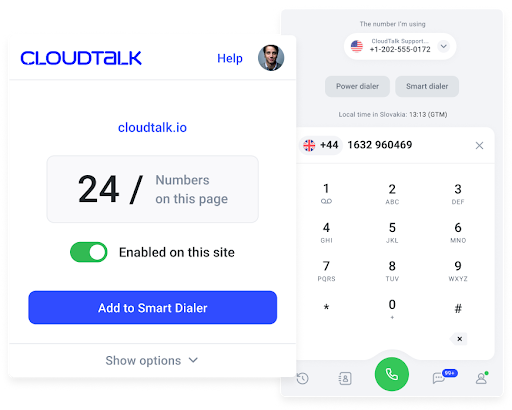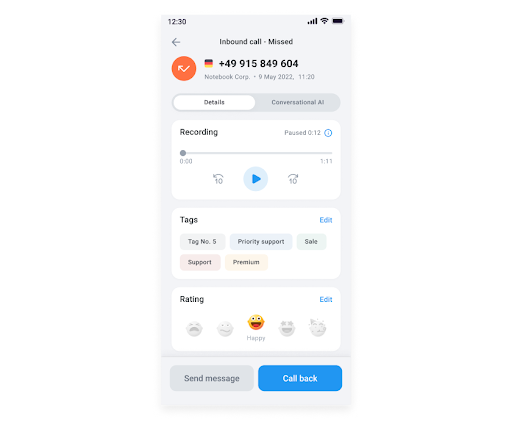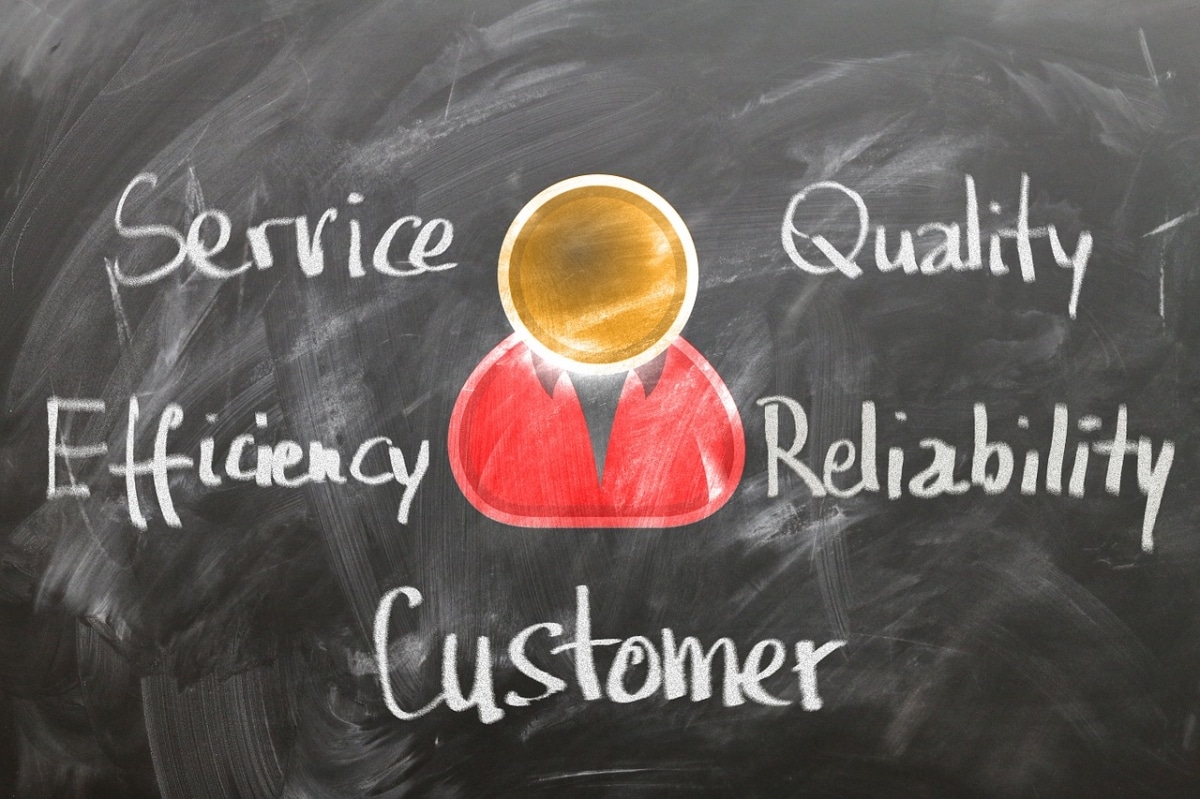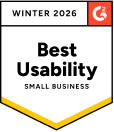Over 80% of sales professionals view building strong relationships as the most important part of the sales process1.
But how can you ensure a great prospect and customer experience while achieving the call volume needed for sales?
That’s one of the questions we answer in this article, using insights from Ben Kinning, Sales VP, Trainer, and Mentor to explore how you can drive call center sales.
Read on and discover 10 effective sales training methods and personalization strategies. You’ll also discover tools that can help you improve performance and save time. And, most importantly, you’ll learn how to increase call center sales.
Key takeaways:
- Optimizing inbound call centers is pivotal for success. Focus on effective agent training, reliable tools, and targeting receptive audiences through CRM segmentation.
- Personalizing conversations with CRM data, setting realistic goals, and prioritizing a human sales approach contribute to a positive customer experience and improved conversion rates.
- Leveraging high-quality VoIP calling platforms like CloudTalk allows you to make more calls to the right numbers and optimize agent performance with analytics.
Drive more call center sales with CloudTalk—learn how today.
1. Improve Your Agents’ Soft Skills
The need to cultivate your agents’ hard skills is self-evident, but they are not the only thing you should focus on. Companies often underestimate the importance of soft skills and pay a heavy price. Every agent should be able to leverage empathy and persuasion in their day-to-day tasks.
Talking with customers is the most crucial part of a call center agent’s work, so training your team to communicate efficiently makes perfect sense. This includes everything, starting with knowing how to sound confident thanks to voice modulation and pitch, understanding how to deal with each type of customer, and being able to choose the best words and phrases.
Last but not least, you must ensure your call center agents have a good grasp of your company, its products and services, and everything that comes with them. Not only does this help boost your employees’ confidence, but it also builds customer trust.
2. Choose the Best Tools for the Job
In addition to properly training agents, it’s critical they leverage the right tools to succeed in their role.
First, you’ll need to ensure they can speak with customers via a reliable calling platform with high-quality audio and connectivity. Then, to keep up with the competition, it’s time to start looking at leveraging the greater functionality found in modern VoIP platforms like CloudTalk.
Here are some features to look out for:
- Power Dialer: Includes automatic list dialing and on-screen scripts to allow agents to reach 2x more prospects. You can also immediately populate call queues with numbers from any website.
- Sentiment Analysis: Provides real-time feedback on customers’ moods, allowing agents to adjust their approach on the fly.
- Interactive Voice Response (IVR): Guides customers through predefined call routes to the right agent to balance workloads, reduce call times, and improve satisfaction.
- Visual Call Flow Designer: Makes it easy to set up these call routes and rules without specialist IT skills, so you can adjust workflows rapidly.
- CRM Integrations: You’ll no longer have to lose time app-switching or updating records.
- Campaign Management: Helps you organize, schedule, and track call campaigns to gauge performance.
- Voicemail Drop: Allows you to create pre-recorded voicemails to save your agents’ time.
- Click-To-Call: Call any number on the web with a single click to speed up outreach.
- Call Center Analytics: Allows you to map the customer journey and track relevant KPIs.

Test-drive the best call center Analytics suite & train agents smarter.
3. Cater to Your Audience’s Needs
If you work in a call center, you probably make quite many cold calls a day.
But cold calling often gets a bad rap, and not unreasonably so. It can be a headache for both parties without intelligent targeting, leading to uncomfortable interactions and wasted time.
Pro tip:
If you do need to take a less targeted approach to outreach, check out our List of Cold Calling Templates to improve success rates.
Ideally, you should tailor your approach to the most relevant clients for your products and services. Here’s how:
- Break down your customer bases to define an ideal customer profile (ICP). An ICP will allow you to strategically target the customers with the best chance of converting since they won’t be surprised when you call and will feel your pitch is relevant to them.
- Work backward to evaluate customers’ specific pain points and how they’re the most receptive to being spoken with.
- Divide your audience into specific segments based on the nature of their interactions with your company.
- Narrow down your selection to only those people who are at an appropriate point in your sales funnel.
The best way of doing that is by incorporating Customer Relationship Management (CRM) software into your activities. You can streamline the process further by integrating the CRM into your call center software. CloudTalk, for example, works with many CRM providers, including Zendesk, HubSpot, Microsoft Dynamics 365, and more.
4. Make Your Customers Feel Valued
To maximize your sales, you need to make sure your employees know how to treat customers to make them feel valued. This is about more than simply calling them by their name or chatting about interests to build familiarity.
To really boost your conversion rates, we recommend leveraging the customer information within your CRM. As Kinning explains: “One size fits all doesn’t work, and every buyer is different in their motivations. Uncovering what those motivations are in early conversations can pay off massively down the line. E.g. if someone is a price-driven buyer, you can put cost-saving front-and-centre when reaching out to them again later.”
Pro Tip
Use Cloudtalk’s CRM integrations so your agents can access customer data in real-time during calls. Address known pain points and help agents tailor their approach on the fly in one unified window.
5. Set Clear Expectations & Track Them Regularly
Companies tend to be too optimistic when setting expectations for their employees. But when those expectations aren’t within the realm of possibility, all you’re doing is setting yourself up for failure and disappointment. That’s why you need to be SMART about choosing your goals.
SMART goals are ones that are:
- Specific
- Measurable
- Achievable
- Relevant
- and Time-limited
The two parts of the acronym you should focus on are “Measurable” and “Relevant”. Starting with the first one, pick the right call center benchmarks or metrics to track your progress. You can also check out our guide to quality assurance metrics to implement initiatives for continuous improvement.
From there, you can focus on choosing your goals. Base your decisions on past data to establish realistic progress and timelines.
In case you have trouble finding the right milestones for your organization, try benchmarking. It’s when you compare yourself to competitors and industry leaders to identify room for improvement and prioritize areas where you’re behind.
6. Don’t Force Sales at the Customer’s Expense
Although your agents’ ultimate goal is to make a sale, you need to teach them not to pursue deals blindly at the customer’s expense. As we’ve said before, people want to feel valued and respected, and treating them as little more than a revenue source won’t win you any favors.
Again, you should be referencing your customer profiles here. Trying to sell a customer a product that doesn’t align with the pain points identified in your ICP strategy will leave customers feeling alienated.
A product or service suggestion made at the right time to address a tangible problem, however, can leave clients with a glowing impression of your agent.
It’s important to spend time during conversation to actually listen to customers and understand their pain points. Asking genuine questions to evaluate wants, needs, and frustrations will go a long way and make it easier to sell products based on their benefits, not just their features. You can do this by:
- Training agents on active listening skills, helping them dig deeper and get to the route of a client’s pain points.
- Leveraging advanced calling features like Talk/Listen Ratio tools. These can help you track the flow of your agents’ conversations and ensure they’re giving clients space to convey valuable insights.
7. Sell Benefits, not Features
Salespeople often fall into the trap of selling features, not solutions. However, customers can find information about all those flashy design flairs and big numbers on your website, so why not tell something new and interesting?
You must remember that people buy products and services because they have problems and need solutions. If you want to convince them to take the plunge, your best bet is to explain how your product applies to their specific use case and what benefits it holds.
Kinning explains what this looks like in practice: ‘Frame your pitch by selling outcomes rather than features, but ensure these aren’t just generic outcomes. It needs to be something with hard, tangible proof. If you’ve worked with someone in a similar industry, showing the outcome they achieved is a great place to start.”
Food For Thought
CloudTalk pitches itself as a scalable, user-friendly, feature-rich solution ideal for businesses looking for a cloud-based call center with global capabilities, robust reporting, and strong support—at an affordable price.
8. Upsell and Cross-Sell to Retain Customers
The two best practices to help you land that extra sale—or prevent churn—are upselling and cross-selling. But what’s the difference?
Upselling is when you offer your customers an “upgrade” on the product or service they’re already using. Often, this takes the form of multiple pricing tiers, like “Standard”, “Advanced”, and “Pro”. The more expensive the tier, the more features it comes with.
- You can try upselling a client even when they first purchase a product by touting all the amazing things your higher tier has that the cheaper tier lacks. But upselling works best when you give the users time to acclimate. Once they’ve been using your product or service for a while, contact them again to explain how an upgrade could improve their experience even further.
Cross-selling, on the other hand, focuses on selling the client a completely different product that works well with their initial purchase.
- For example, if someone buys your marketing tool, you can try selling them a CRM that helps extend the original tool’s functionality while offering its own set of benefits.
9. Increase Call Pick-Up Rates with Local Caller ID
We’ve spoken a lot about what happens during your calls, but we’ve not yet delved into what happens before a customer ever picks up (or doesn’t).
People are far more likely to trust and pick up a call with a local area code. If you operate an international call center, you can use Local Caller ID to your advantage by purchasing local phone numbers for the areas you’re targeting either through SIM cards or, better yet, a VoIP provider like CloudTalk.
After all, the effort you put into training your team members for their customer conversations will be all for nothing if nobody actually picks up.

10. Implement Call Tracking for More Insights
Finally, the last tip for improving your sales success rate is to know your customers. By implementing call tracking, you can better understand where your customers are coming from and their pain points, needs, and desires. This will allow you to better prepare your call center agents for the conversations they’re most likely to have.
Again, your call center software is the best place to start with this. Beyond standard call tracking and CRM integrations, CloudTalk also allows you to record calls, tag them based on their type and outcome, and add relevant notes for future reference. It also lets you keep track of crucial call center KPIs so you know what’s working and where to improve.

Recommended articles
Ready to sell better and much smarter?
Optimizing Your Sales Process With a Single Tool
Call center sales are made up of complex, multi-faceted processes that require a great deal of thought and effort to get right. But with the right tools, techniques, and training, you can provide a personalized approach that drives sales at scale.
The key is to consolidate your processes as much as possible — after all, 25% of employees say that working across multiple software solutions is the biggest challenge they face at work2.
CloudTalk’s call center software integrates with your CRM to provide a clear, real-time view of customer data. It also includes clear call insights and performance analytics to help you continually adjust your approach.
With more calls to the right numbers and the right data in place, you can maximize your conversions while retaining high call volume.
Learn how to start driving more call center sales with with the best call center software
Sources:

















